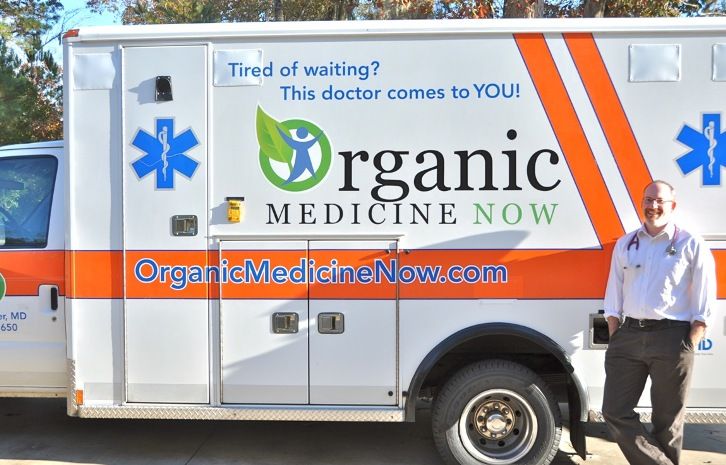- Industry News
- Access and Reimbursement
- Law & Malpractice
- Coding & Documentation
- Practice Management
- Finance
- Technology
- Patient Engagement & Communications
- Billing & Collections
- Staffing & Salary
Why I Practice Medicine from the Back of an Ambulance, Not an Office
Converting the back of an ambulance to a modern office now allows me to see my patients at their home or work in my mobile office.
In my previous three blog posts regarding creating a lean medical practice, I have given you my insight and advice that you can use at your own practice.
By writing these ideas, I truly hope I have helped you start to think about the way we practice outpatient medicine; because, for the most part, we are all following the same type of model. Our offices pretty much look the same on the inside and patients are treated the same as well - a lot of waiting in the waiting room and then in the exam room for the doctor to arrive. So while we create a similar experience for the patient, we as doctors, also experience similar results: declining reimbursements, shortened appointment times due to our need to see more volume of patients, and an increase in dissatisfaction with the outpatient practice model.
I, too, am right there with all of you when I tell you that outpatient clinical medicine is not everything I had hoped it would be. Over the past 11 years since I have graduated medical school, there have been plenty of clinical “updates” but very few, if any, practice development ones. Sure, our technology has changed allowing us to better integrate EHRs and billing. And yes, the Internet and the digital world of iPhones and iPads has certainly changed our behavior in our practices. But overall, the way we interact with our patients is largely the same.
I knew that the more efficient and lean my practice was, the better I could be at being a doctor. And to me this is critical. I did not go to medical school and endure years of residency, etc., to learn how to run a private practice. I did so to be the best clinician I could be. But the reality of outpatient medicine with its many limitations, inefficiencies, and constrictions left me managing my work flow more than my patients.

And so I took the radical step off the cliff and created a brand new practice model called ArriveMD. I converted the back of an ambulance to a modern office and now see my patients at their home or work in my mobile office.
The concept of house calls goes way back to the roots and origin of medicine itself. We all have patients who can recount the days when their doctor, long ago, used to come to their house to see them.
House calls are very convenient for the patient and will save them a lot of time and waiting. But house calls have their limitations too; especially in this modern time, going into a patient’s home may not be the most comfortable experience for the patient or the doctor. And since many patients work, it would be nearly impossible to see a patient at his or her work space.
But now, with my new mobile office, I see patients at their work or home or even the parking lot of a Dunkin Donuts. I meet my patients all over town - they love not having to wait in my office any more. When I tell them they have an appointment at 2 p.m., I arrive at 2 p.m. I always hated how most doctors ignore the schedule and run “late” nearly every day. Patients abhor it as well.

My practice now has very little overhead expenses: gas, some medical supplies, insurance and that’s about it. No more rent payments or electricity payments or staff salaries. My ambulance has my website and phone number all over it so I literally market myself all over town providing myself instant marketing.
As such, the money I bring into my practice goes directly to me. So far my income has already increased and it has only been a couple of months. I am confident that my income after one year with ArriveMD will be at the very top of my specialty (mostly because I have very little expenses).
So there you have it. I have walked you through my process of creating the most lean and efficient and innovative medical practice model. Sure, there will be hurdles I have to jump, but by changing gears and changing the way medicine can be practiced, I am taking steps towards helping us all bring about those changes to medicine itself. You don’t have to suck it up and stay in line. Medicine is dynamic and our patients need our attention and focus now more than ever.
And we, as physicians, need to enjoy medicine more than ever - for when we bring back the joy, our ability to take care of our patients skyrockets. For me, finding joy meant radically changing gears and creating an incredibly lean and innovative practice model. What does it mean for you?
Find out more about Craig Koniver and our other Practice Notes bloggers.
Asset Protection and Financial Planning
December 6th 2021Asset protection attorney and regular Physicians Practice contributor Ike Devji and Anthony Williams, an investment advisor representative and the founder and president of Mosaic Financial Associates, discuss the impact of COVID-19 on high-earner assets and financial planning, impending tax changes, common asset protection and wealth preservation mistakes high earners make, and more.
